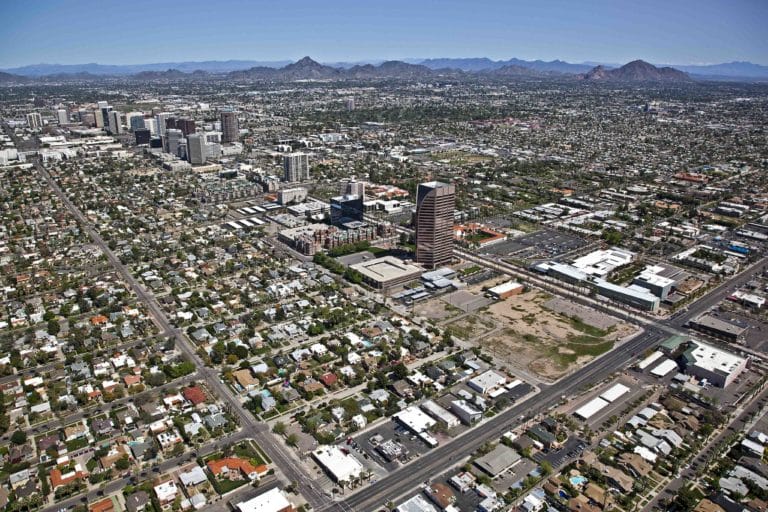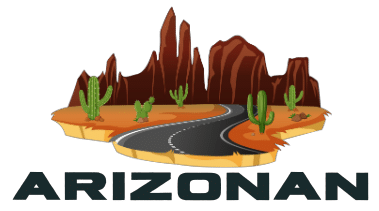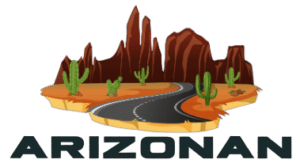Coolidge old
Coolidge old

Coolidge Arizona
Thank you for reading this post, don't forget to subscribe!Coolidge Location
The city of Coolidge is located on State Highway 87, approximately halfway between Phoenix and Tucson. The city of 6,900 is in Pinal County. The community of Coolidge is situated close to the Gila River halfway between Phoenix and Tucson. Coolidge was once known as being the “Cotton King.” The Gila River played a big role in providing the necessary water to grow cotton.
Even though Coolidge is not technically in the Valley of Sun, it is getting closer to becoming part of it. The growth and expansion in the East Valley have exploded, causing borders to change. It is predicted that one day Coolidge will be connected to the Valley of the Sun through the development of surrounding communities.
Coolidge is also inside Arizona’s Golden Corridor. This corridor is a strip of land running from Phoenix to Tucson. It is envisioned that the Arizona Golden Corridor will be the next growth area in the state. The Arizona Golden Corridor will be a cluster of cities and towns stretching along the edge of Interstate 10. Although the city of Coolidge does not sit on Interstate 10, it is still considered part of Arizona’s Golden Corridor.
Climate
The climate is typical of the southwest. There is a mild winter that is balanced by a long hot, dry summer. Many have claimed that the dry, hot summer conditions have helped to relieve many of their allergy symptoms. Summer days are clear and spectacular and the temperatures are truly remarkable. Spring and autumn are mild transitions into the other seasons. There is a brief monsoon season that is truly extraordinary.
Find The Perfect Home !
Search Cities In Arizona
Coolidge Properties
Coolidge properties range from small ranchettes to much larger farms and ranches. Some newer residential developments have popped up in the area. There are many choices in Coolidge when it comes to living styles. The desert landscape makes Coolidge the perfect home.
From the surrounding area’s rich history to its southwestern farming roots, Coolidge offers its residents a progressive quality of life.
It is a city that blends a relaxed, rural atmosphere with convenient access to urban areas nearby. Its natural desert plants grow in abundance and create spectacular landscapes in and around the city. Coolidge is a progressive and comfortable place to live in.
Locate properties available today in Coolidge by clicking here.
The Market
The spectacular amount of market activity in Arizona over the past decade has been well documented. People of all walks of life have been moving to Arizona, and particularly Phoenix, in numbers unmatched in recent memory.
Figures from 2000-2005 show nothing but increased construction, development, unit sales and unit sales prices in virtually every category of structure offered on the market. The greatest degree of growth occurred during fiscal 2005, where previous growth statistics, impressive in their own rights, spiked sharply to even higher levels. Of particular note to the residential home seller/buyer was the record appreciation in new and resale home values. These rates were up for new homes and resales, rentals, and condominium units, the only difference being one of degree.
While it is true that not all Phoenix area real estate markets showed the same amount of increase it is true that the degree of growth for each area was proportional.
Then along came 2006 and equally well documented has been the decline in the rate of growth of some key market indicators. The greater Phoenix resale home market is showing marked decreases in sales figures for comparable periods last year across the valley and across most unit categories.
One interesting exception is the median price for resale units has risen slightly. This rising price accompanied by a decrease in sales seems to be more in keeping with normal market tendencies. One would expect spectacular growth to lead eventually to a degree of scarcity that would be reflected in higher prices. Could this indicate that the market has reached its peak?
Let’s look at another indicator to see what it may tell us.
Since 1985, the Arizona Real Estate Center has computed what it calls “affordability indexes” for the Greater Phoenix area and several nearby cities.
The index was invented as a guide to predict market activity. When the index value is 100, the typical home buyer (based on the current median resale price and household income) would be able to afford a median-priced home at the stated effective interest rate. A lower index value indicates less availability of affordable single-family homes.
The affordability index for the areas selected for the study shows a significant reduction in the availability of that this type of housing within the means of the ordinary consumer. Whether this data can be used as a reliable indicator for other groups and other types of housing is arguable, but it does beg the question “how much longer will the market be able to sustain a situation where both sellers and buyers can apparently benefit by getting involved in the market?
The short answer is that these conditions can remain so long as they are supported by the market.
So when we take a long look at the larger picture we must ask ourselves whether we can realistically expect to realize more potential gain or value now or at some time in the future and it is very reasonable to conclude that the best possible time to buy or sell Arizona really is now.
Coolidge History
The town had its earliest start as a small farming community. Things were relatively quiet until President Coolidge authorized the building of the Coolidge Dam in 1924. The large scale Coolidge Dam construction project gave momentum to the development of the City of Coolidge. The dam provided water for crops and for people living in the area.
Today, agriculture is not its only focus for the town. Coolidge is becoming a regional trade and service centre, dealing with the dual markets of Phoenix and Tucson. The community provides equipment, supplies, and personal services to the area’s families. Coolidge’s future continues to use its strategic location to create an active environment for economic and business development.
Education plays an important role in Coolidge. Central Arizona Community College, the Signal Peak campus is located in the city. The Signal Peak campus provides upper-division coursework through Northern Arizona University The campus provides research and studies in a number of areas of education, general and specific.
The community college is home to 20 National Championships and boasts as one of the most dominant athletic programs in the National Junior College Athletic Association. Central Arizona Community College is committed to providing a superior environment and plays an active role in being a part of the city.
Coolidge Entertainment
Coolidge is alive and opportunities abound. It offers its residents a bit of city life with its easy access to metropolitan areas such as Phoenix and Tucson. Major sporting events, entertainment, and cultural activities are a short drive away.
However, it is Coolidge’s small-town feel shown through its festivals and activities that cause people to stay in this rural city. The Coolidge Historical Museum is a symbol of the small-town feel that the city is known. Festivals and local celebrations contribute to Coolidge’s sense of community and capture the unique cultural heritage of the area.
Coolidge Outdoor Recreation
A friendly community and a dynamic recreational program give residents a variety of activities to choose from.
San Carlos City Park is a great place for outdoor events and sports and many residents, young and old, spend time at the local park.
One great activity is driving the Pinal Pioneer Parkway. This scenic drive has received the distinction of being one of the “best drives in Arizona”. The parkway begins just east of the city, in the town of Florence, and continues south toward Tucson. A portion of the parkway contains a natural garden that features almost every species of flora found in Arizona. Amazing!
Picacho Reservoir is to the south of the city. This reservoir is a habitat for a number of rare and beautiful species of birds. Located on the southern outskirts of the city is the Casa Grande Ruins National Monument. This monument is one of the best-preserved pre-Columbian dwellings in America. This monument preserves the culture of the ancient Hohokam Indian people, who farmed the Gila River Valley centuries ago. The Hohokam Indians were the first farmers of the Sonoran Desert and the famous “Casa Grande” (Spanish for “big house”) four-story walled ruins
There is also a gift shop full of authentic Indian crafts. The Golden Era Toy and Auto Museum feature a large collection of antique toys, dolls, trains, and restored automobiles.
Coolidge New Home Developments
Coolidge’s new home developments are found a drive southeast of Phoenix. As the Valley of the Sun has grown, many new home builders are looking to other areas to develop their master-planned communities. Coolidge is an area that sits to the east of the Sacaton and San Tan Mountain ranges offering amazing views to those calling Coolidge home.
Coolidge, halfway between Phoenix and Tucson, is the commercial center of Arizona’s cotton industry. In 1925, after the construction of the Coolidge Dam transformed the flat desert into rich farm and ranch land, R.J. Jones laid out an 80-acre site to found the city. The city’s name honors the U.S. President who dedicated Coolidge Dam in 1930. Incorporated in 1945; the city now covers eight miles and has more than 7,000 residents. The warm dry winter climate makes it an ideal tourist and retirement center. Hundreds of thousands of visitors stop annually to see the Casa Grande Ruins National Monument in Coolidge. From Coolidge’s founding until the early 1950s, the economy was mainly dependent on agriculture, and, to a lesser extent, mining. Growth was relatively steady until the late 1940s. As water use reached a maximum and mechanical equipment replaced farm workers, it leveled off.
The Coolidge economy diversified as manufacturers located in and near the city, employment increased in mines in eastern Pinal County, and greater emphasis was placed on winter tourism. Coolidge is in the major growth corridor between Phoenix and Tucson. Today, it is a regional trade and service center for agricultural producers, providing equipment, supplies, and personal services for farm families. Community efforts and the completion of the the500-acre Pima-Coolidge Industrial Park just north of the city on the Gila River Indian Reservation have helped manufacturing grow. Government agencies, such as the Arizona Training Program, Central Arizona College, the Arizona State Prison, and the County Courthouse are also major sources of jobs.
Casa Grande Ruins National Monument preserves ruins of and interprets the culture of the prehistoric Hohokam people, who farmed the Gila River Valley centuries ago. The ruins include the Casa Grande (Spanish for “Big House”), a unique four-story caliche structure built in the early 1300s, and the surrounding walled neighborhood. Bookstore and picnic areas are also available. Within a short drive from Coolidge are the Gila River Indian Reservation, with picturesque villages, Catholic missions and an Arts and Crafts Center; the Papago Indian Reservation, with basketry and handicraft items; Pinal Pioneer Parkway, one of the state’s most beautiful scenic drives; and numerous lakes, with excellent fishing and water-based activities. Coolidge offers special programs for winter visitors. November through April is filled with activities such as potlucks, tours and festivals.
Coolidge, halfway between Phoenix and Tucson, is the commercial center of Arizona’s cotton industry. In 1925, after the construction of the Coolidge Dam transformed the flat desert into rich farm and ranch land, R.J. Jones laid out an 80-acre site to found the city. The city’s name honors the U.S. President who dedicated Coolidge Dam in 1930. Incorporated in 1945; the city now covers eight miles and has more than 7,000 residents. The warm dry winter climate makes it an ideal tourist and retirement center. Hundreds of thousands of visitors stop annually to see the Casa Grande Ruins National Monument in Coolidge. From Coolidge’s founding until the early 1950s, the economy was mainly dependent on agriculture, and, to a lesser extent, mining. Growth was relatively steady until the late 1940s. As water use reached a maximum and mechanical equipment replaced farm workers, it leveled off.
The Coolidge economy diversified as manufacturers located in and near the city, employment increased in mines in eastern Pinal County, and greater emphasis was placed on winter tourism. Coolidge is in the major growth corridor between Phoenix and Tucson. Today, it is a regional trade and service center for agricultural producers, providing equipment, supplies, and personal services for farm families. Community efforts and the completion of the 500-acre Pima-Coolidge Industrial Park just north of the city on the Gila River Indian Reservation have helped manufacturing grow. Government agencies, such as the Arizona Training Program, Central Arizona College, the Arizona State Prison, and the County Courthouse are also major sources of jobs.
Casa Grande Ruins National Monument preserves ruins of and interprets the culture of the prehistoric Hohokam people, who farmed the Gila River Valley centuries ago. The ruins include the Casa Grande (Spanish for “Big House”), a unique four-story caliche structure built in the early 1300s, and the surrounding walled neighborhood. Bookstore and picnic areas are also available. Within a short drive from Coolidge is the Gila River Indian Reservation, with picturesque villages, Catholic missions, and an Arts and Crafts Center; the Papago Indian Reservation, with basketry and handicraft items; Pinal Pioneer Parkway, one of the state’s most beautiful scenic drives; and numerous lakes, with excellent fishing and water-based activities. Coolidge offers special programs for winter visitors. November through April is filled with activities such as potlucks, tours, and festivals.
The area where Coolidge sits today seems to have always been a farming zone. The Hohokam Indians arrived in around 1300 A.D. and build a canal irrigation system for their crops.
The Indians also built a tall eleven-room structure made of logs and adobe. Some believe that the structure was used as a watchtower to help them prepare for attacks. However, no one knows why the Hohokams vanished in 1450 leaving behind their canals and home. Today visitors can see this structure at the Casa Grande Ruins National Monument.
The town of Coolidge owes its beginnings to farming, coupled with the Coolidge Dam. President Calvin Coolidge authorized the building of the Coolidge Dam in 1924. The farming community was created just two years later when R.J. Jones laid out an 80-acre site to found the town. The town was named in honor of President Coolidge.
The name is fitting because the town uses the water from the dam to grow its crops. Coolidge was incorporated in 1945 and today the city stretches eight miles. Coolidge is known as an ideal tourist site being so close to the Casa Grande Ruins National Monument. Agriculture is not the only focus in town.
Today the town is becoming a regional trade and service center, due to the town’s proximity to Phoenix and Tucson.

